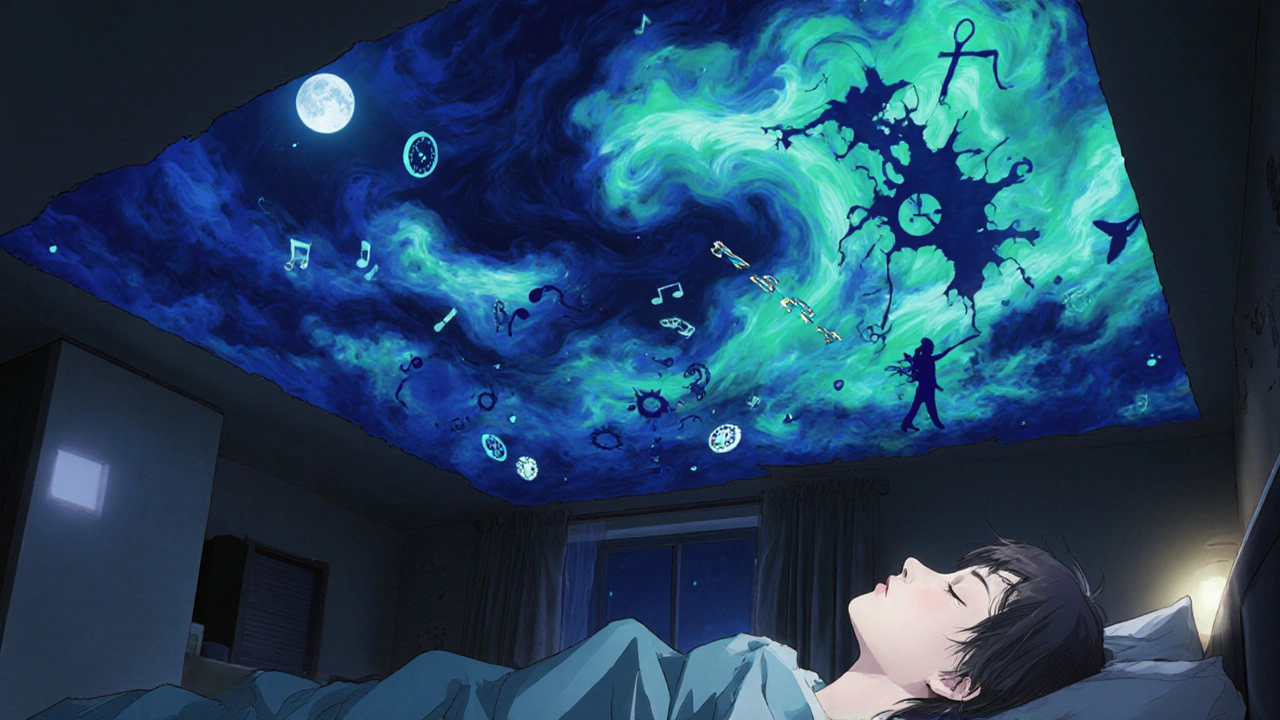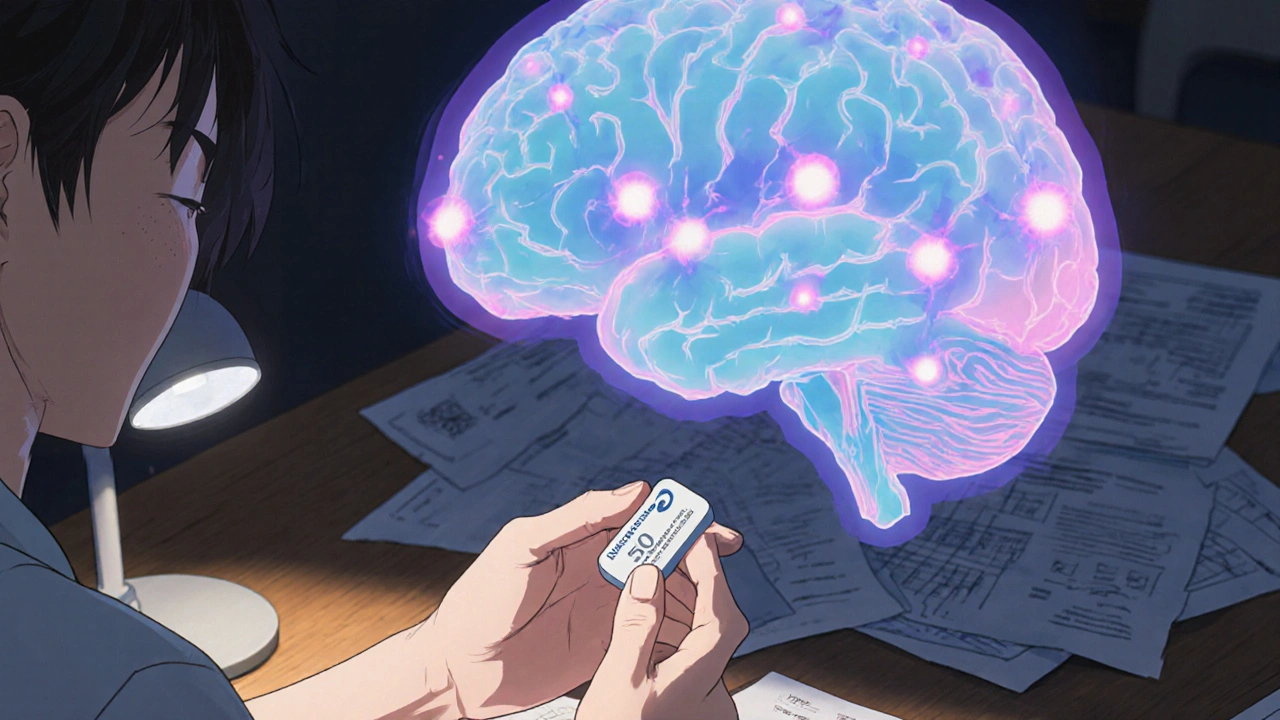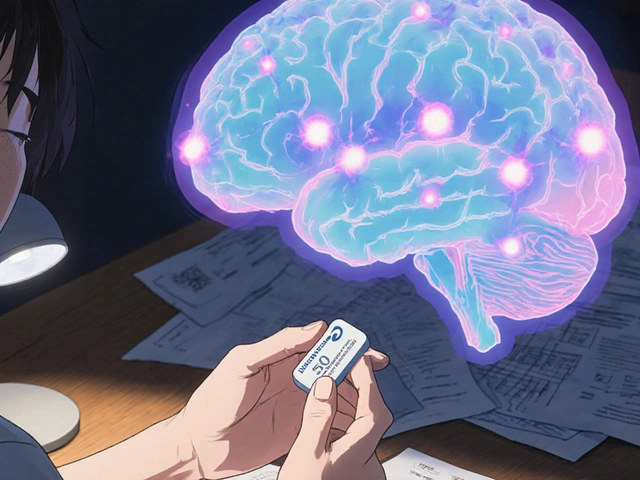Ever wondered if the medication you’re taking for opioid or alcohol dependence is messing with your nightly shut‑eye? naltrexone sleep concerns are common, and the answers aren’t always clear-cut. Below we unpack what naltrexone does, how it interacts with the brain’s sleep machinery, and what you can do to keep your rest on track.
What Is Naltrexone?
Naltrexone is an opioid antagonist approved for treating alcohol use disorder and preventing opioid relapse. First cleared by the FDA in 1984, it blocks the euphoric effects of opioids by binding to the mu‑opioid receptor without activating it.
Most people take it in a 50 mg tablet once daily, though a long‑acting injectable (Vivitrol) is given once a month at 380 mg. The drug’s half‑life is roughly 4 hours, but its receptor occupancy can last up to 24 hours, which is why a single dose can blunt cravings for a full day.
How Does Naltrexone Work in the Body?
The key action is competitive inhibition at the mu‑opioid receptor. By sitting in the receptor’s pocket, naltrexone prevents endogenous opioids (like endorphins) and external opioids (like heroin or prescription painkillers) from binding.
This blockade isn’t just about stopping a high; it also tweaks the brain’s reward pathways. Dopamine release in the nucleus accumbens drops, which can dampen cravings but may also affect mood and arousal levels, both of which are tightly linked to sleep regulation.

Sleep Basics: Why It Matters
Sleep is a complex physiological state that cycles through light N1, deeper N2, slow‑wave N3, and rapid eye movement (REM) stages.
Each stage serves a purpose: N3 restores the body, REM consolidates memory and mood, and the balance between them keeps you alert, emotionally stable, and physically healthy. Disrupt any of these stages, and you’ll likely feel foggy, cranky, or even experience hormonal shifts like higher cortisol.
Potential Ways Naltrexone Can Affect Sleep
- Altered REM sleep: Some users report vivid dreams or reduced REM duration. This may stem from the drug’s impact on cholinergic pathways that promote REM.
- Insomnia or sleep onset delay: Blocking endogenous opioids can lower the natural sedative effect they have, making it harder to fall asleep.
- Restless legs or periodic limb movements: Although rare, changes in dopaminergic tone have been linked to motor restlessness at night.
- Daytime fatigue: If nighttime architecture is fragmented, you’ll feel groggy the next day, which can be mistaken for a side‑effect of naltrexone itself.
It’s worth noting that not everyone experiences these issues. Genetics, dosage, concurrent medications, and underlying conditions all play a role.

Research Findings on Naltrexone and Sleep
Clinical data are still emerging, but a handful of studies give us a snapshot.
| Study | Design | Dosage | Sleep Outcome | Notes |
|---|---|---|---|---|
| Smith 2021 | Double‑blind, placebo‑controlled (n=48) | 50 mg daily | ↓ REM % (‑12 %), increased awakenings | Effect faded after 4 weeks |
| Lee 2022 | Open‑label, crossover (n=30) | Vivitrol 380 mg monthly | No significant change in total sleep time | Participants reported vivid dreams |
| Garcia 2023 | Observational cohort (n=112) | Varied (25‑100 mg) | Mixed: 35 % insomnia, 20 % improved sleep | Confounded by concurrent alcohol abstinence |
The picture isn’t black‑and‑white. Some people get a temporary dip in REM, others notice no change, and a few even say their sleep improves once cravings subside. The key takeaway: monitor your own patterns rather than relying solely on averages.

Practical Tips If You’re Taking Naltrexone
- Track your sleep: Use a simple notebook or a free app to log bedtime, wake‑time, and perceived sleep quality for at least two weeks.
- Mind the timing: Take your dose early in the day if you’re prone to insomnia. Evening dosing can occasionally keep you awake.
- Stay consistent: Skipping days can cause rebound cravings and may also disturb your circadian rhythm.
- Limit stimulants: Caffeine after noon and heavy evening meals can amplify any sleep‑disrupting effect.
- Consider melatonin: A low dose (0.5-1 mg) 30 minutes before bed can help reset the clock without interacting with naltrexone.
- Exercise earlier: Physical activity boosts endorphins naturally, which can counteract the mild sedative loss from opioid blockade.
- Review other meds: Some antidepressants (e.g., SSRIs) already affect REM; combining them with naltrexone may intensify changes.
These steps won’t guarantee perfect sleep, but they give you a proactive framework.
When to Talk to Your Doctor
If any of the following pop up, schedule a check‑in:
- Persistent insomnia lasting more than two weeks
- Severe nightmares or vivid dreams that cause anxiety
- Daytime fatigue that interferes with work or school
- New motor restlessness (e.g., restless legs) that disrupts sleep
- Any mood swing that feels out of character
Doctors may adjust the dose, switch to the injectable form, or suggest a short‑term sleep aid. Never stop naltrexone abruptly without professional guidance, as that can trigger cravings.
Can naltrexone cause insomnia?
Yes, some people experience difficulty falling asleep, especially during the first few weeks of treatment. The effect is usually mild and may improve as the body adapts.
Does naltrexone affect REM sleep?
Research shows a modest reduction in REM percentage in some short‑term studies. The change is often temporary and not clinically significant for most users.
Should I take melatonin with naltrexone?
Melatonin is generally safe and can help stabilize your sleep‑wake cycle. Start with a low dose and discuss it with your prescriber to avoid any unexpected interactions.
Is the injectable form (Vivitrol) better for sleep?
Vivitrol bypasses daily peaks and troughs, which some patients find leads to more stable sleep. However, individual response varies, so it’s worth a trial under medical supervision.
Can lifestyle changes offset naltrexone’s sleep side effects?
Yes. Consistent bedtime, limiting caffeine, regular exercise, and good sleep hygiene can dramatically reduce any insomnia or restless‑leg‑type symptoms linked to the medication.

